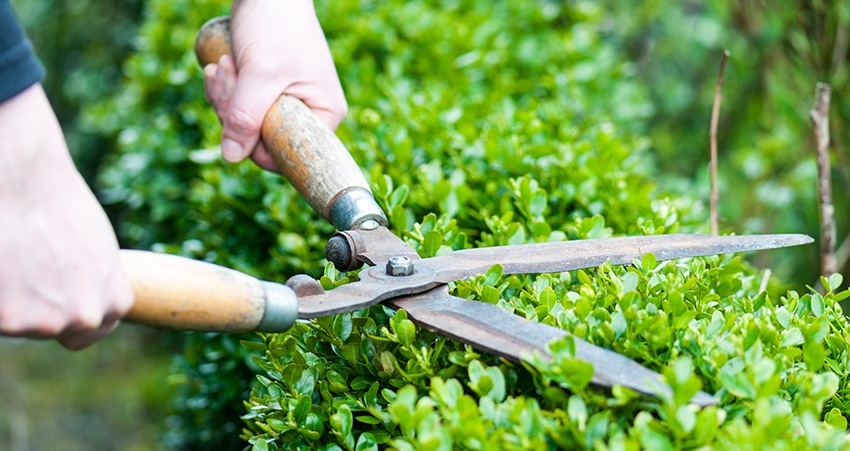SHRUBS
Transform Your Landscape with Beautiful Shrubs
Steiner Lawn Care is a professional lawn care company offering a variety of shrub services. They specialize in shrub removal and planting services. Additionally ongoing maintenance services including mulching, trimming and shaping of existing shrubs.
What is a Shrub?
A shrub is a short, bushy plant with many stems, and it is smaller than a tree. People often use shrubs in landscaping to add structure, texture, and color to outdoor spaces. They can be evergreen or deciduous, meaning they can retain their leaves year-round or shed them during certain seasons.
Shrubs require little care and people can use them for hedges, borders, or focal points in gardens or front yards. People commonly use them to provide privacy.
How to Plant
These steps can grow shrubs effectively.
- Pick the correct shrub: Select bushes that suit your local weather, soil type, and sunlight levels. Think about the shrub’s size when fully grown, how fast it grows, and any special care it needs.
- Prepare the soil: Before planting, prepare the soil by removing any weeds, rocks, or debris. Loosen the soil and amend it, stimulate growth with organic matter like compost to improve drainage and fertility.
- Dig the hole: Dig a hole that is wider and slightly shallower than the root ball of the shrub. The hole should be deep enough to accommodate the roots without bending or crowding them.
- Gently place the shrub in the hole, ensuring that you center and upright it. The top of the root ball should be level with or slightly above the soil surface.
- Back fill the hole: Fill the hole with the soil you removed, gently firming it around the roots. Avoid compacting the soil too much, as it can hinder root growth.
- Water thoroughly: After planting, water the shrub thoroughly to settle the soil and eliminate air pockets around the roots. Provide regular watering during the establishment period, especially during dry spells.”
Apply organic mulch around shrub base, leaving gap around stem to prevent rot. Mulch helps retain moisture, suppress weeds, and regulate soil temperature. Regularly monitor the shrub for watering needs, pests, and diseases, and provide appropriate care as needed.
When choosing shrubs, remember to think about their specific care needs. Different shrubs may require different amounts of pruning, fertilizing, and protection from extreme weather.
Trimming
To trim shrubs, follow these steps:
- Timing: The best time to trim shrubs depends on the specific species. Trim bushes in late winter or early spring before new growth starts, when they are dormant. However, some shrubs may have different pruning requirements, so it’s important to research the specific shrub species you have.
- Tools: Use sharp and clean pruning shears or hedge trimmers to trim shrubs. Make sure the blades are sharp to ensure clean cuts and reduce the risk of damaging the shrub.
- Assess the shrub: Before trimming, assess the shrub’s overall shape and health. You need to identify any dead, damaged, or diseased branches that require removal. Also, consider the desired shape and size of the shrub.
- Prune selectively: Start by removing any dead, damaged, or diseased branches. Then, selectively prune the shrub to maintain its shape and size. Avoid over-pruning, as it can weaken the shrub and affect its overall health.
- Cut at an angle to help the shrub grow: angle the shears away from the shrub when making cuts. Make clean cuts just above a bud or lateral branch to encourage proper regrowth.
- Step back and assess: Periodically step back and assess the shrub’s shape and symmetry as you trim. This will help you achieve a balanced and aesthetically pleasing result.
- Clean up: After trimming, remove any debris or clippings from around the shrub. Properly dispose of the trimmings or use them for composting if suitable.
Different native plants have different pruning needs, so it’s important to research and understand the requirements of the shrubs you’re trimming. Should you be unsure about pruning a bush, it’s advisable to seek assistance from a landscaping professional or tree specialist.. For shrub trimming services near me, contact Steiner Lawn Care.
Shrub removal
Maintenance
To maintain a shrub, there are a few key steps you can follow:
- Watering: Provide regular watering to keep the soil moist, especially during dry spells. The frequency and amount of water needed will depend on the specific shrub species and the climate in your area. It’s important to avoid over watering, as this can lead to root rot and other issues. Monitor the soil moisture and adjust your watering schedule accordingly.
- Mulching: Put organic mulch around the shrub’s base, but leave space around the stem to avoid rot. Mulch helps retain moisture, suppress weeds, and regulate soil temperature. It also adds nutrients to the soil as it breaks down. Replenish the mulch as needed to maintain a depth of 2-4 inches.
- Fertilizing: Some shrubs may benefit from regular fertilization to promote healthy growth and flowering. Before applying any fertilizer, it’s important to know the specific nutrient requirements of your shrub species. Use a balanced slow-release fertilizer or organic compost to provide the necessary nutrients. Follow the instructions on the fertilizer packaging for application rates and timing.
- Pruning: Regular pruning is essential for maintaining the shape, size, and overall health of shrubs. Prune selectively to remove any dead, damaged, or diseased branches. Additionally, you can trim the shrub to maintain its desired shape and size.
- The best time to trim shrubs is usually in late winter or early spring before new growth starts. However, it’s important to research the specific pruning requirements of your shrub species, as some may have different timing needs.
- Pest and Disease Control: Monitor your shrubs regularly for any signs of pests or diseases. Common issues include aphids, scale insects, powdery mildew, and fungal infections. If you notice any problems, take appropriate measures to control and treat them. This may involve using organic or chemical insecticides, fungicides, or contacting Steiner Lawn Care for assistance.
Different fast growing shrubs have different care needs, so it’s important to research and understand the requirements of your shrubs. Additionally, consider the climate and soil conditions in your area when maintaining your shrubs.
Landscaping
People commonly use shrubs in landscaping to add structure, texture, and color to outdoor spaces. You can use different types of shrubs for landscaping, depending on your specific needs and preferences. Here are some good choices used for landscape:
- Boxwood (Buxus): People recognize boxwood bushes for their thick leaves and their capacity to form structured hedges. They are evergreen and come in different varieties, offering different sizes and leaf colors.
- Juniper (Juniperus): Juniper shrubs are versatile and come in a wide range of sizes and shapes. Their leaves are thin and people can use them on the ground, as foundation plants, or as accents in the landscape.
- Hydrangea (Hydrangea): Oakleaf Hydrangeas are flowering shrubs that add a pop of color to the landscape. They come in various colors, including pink, blue, white flowers, and purple. Hydrangeas prefer partial shade and moist, well-drained soil.
- Azalea (Rhododendron): Azaleas are popular for their vibrant and showy flowers. They come in a variety of colors and you can use them as foundation plantings, borders, or mass plantings. Azaleas prefer acidic soil and partial shade.
- Rose (Rosa): Roses are classic shrubs that add beauty and fragrance to the landscape. They come in a wide range of colors and varieties, including hybrid teas, floribundas, and climbers. Roses require full sun and well-drained soil.
Spirea (Spiraea): Spirea shrubs have a reputation for their clusters of small flowers and attractive foliage. They come in different varieties, offering different flower colors and sizes. You can easily grow spireas and use them as borders, foundation plantings, or mass plantings.
Dwarf Alberta Spruce is a small evergreen shrub that gives a formal and elegant appearance to the landscape. It has a conical shape and requires full sun and well-drained soil.
Landscapers commonly use these shrubs, and here are just a few examples. When picking low maintenance shrubs native to Texas, think about the weather, soil, size, and care needed for Texas shrubs.
Shrub Trimming Services Near Me
Don’t Wait!! For shrub and hedge trimming services near me contact Steiner Lawn Care 512.831.7172. Steiner Lawn Care, located in Central Texas, offers shrub trimming services and specializes in native Texas shrub expertise.





